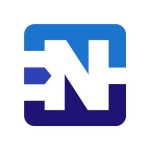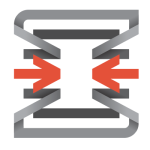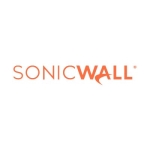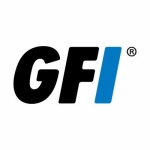We utilize Fortinet FortiGate appliances at six branch offices, one data center, and one DLP site. Our network is driven by SD-WAN, and we employ FortiGate as our firewall, FortiEDR for endpoint protection, and FortiSwitch for alerting on all layers of the network.
For me, the best practice is to deploy on-premises for data centers. However, for small branch offices with over ten to twenty staff members, I can deploy the devices remotely. We can provision our cloud and push the configuration to those devices from the cloud.
The visibility that FortiGate provides into our devices is crucial for network segmentation. I want to see the output in a specific way. The traditional approach has shifted slightly, as I'm accustomed to Cisco networking equipment. Typically, we have a call feature, but I'm currently using all the call features for internal routing. However, with FortiGate, most security subnets are segmented and protected behind the firewall. This allows me to lock down or secure sensitive subnets, such as HR or departmental information. I can log in from there, and all other subnets for client users require centralized access. This means that all traffic must go through the firewall, enhancing security.
FortiGate enabled us to achieve compliance with governance requirements. The FortiGate, along with fabric security and checkpoints, essentially act as regulatory checkers, reviewing our security practices against industry best practices and guidelines. If they identify any discrepancies, they alert us, allowing us to develop and implement mitigation plans to address the issues. For instance, if our SSH configurations don't meet security standards, such as algorithm or cipher requirements, FortiGate will notify us, enabling us to take corrective action and regain compliance.
We utilize API calls for FortiGate, including those related to our PRTG monitoring system. Additionally, we employ HVAC calls and leverage another MDR solution from Arctic Wolf to trigger specific events on the FortGate. This API functionality enables us to generate API keys and seamlessly integrate with API features across various platforms.
Integrating FortiGate into our environment is straightforward. Our transition from Palo Alto to FortiGate was seamless, utilizing our existing policies and migration tools. FortiGate also provides provisioning capabilities for defining branch office configurations. As long as branch office devices can access the internet to communicate with Fortinet Cloud, we can remotely implement provisioning for these devices, offering greater convenience for small branch offices.
The built-in APIs streamline integrations with other vendors, reducing deployment time. They effortlessly generate API keys upon logging into the Fortinet network, facilitating the deployment of our PRTT monitor tools. These tools seamlessly integrate with each other, fostering rapid deployment. Most platforms, including Cisco Meraki, Palo Alto, and Check Point, now adhere to industry standards and support API calls.
FortiGate has been instrumental in mitigating the risk of cyberattacks that could potentially disrupt our production operations. I am particularly impressed with Fortinet's cloud-based FortiGuard service, which continuously updates our systems with the latest zero-day attack protection, significantly reducing the threat landscape within our industry. Given the energy industry's heightened vulnerability to cyberattacks, we have implemented measures to restrict access to our network based on geolocation IP addresses. This includes restricting access from countries such as Russia and China, further safeguarding our environment from potential threats. Additionally, FortiGuard's regularly updated list of malicious websites provides an invaluable layer of protection for our industry.
In the event of a production-disrupting attack, we can utilize FortiManager to remotely isolate and mitigate the threat by shutting down specific subnets or networks. We can easily navigate through the unpacked data, and upon detecting a suspicious event, we can initiate automation or SOAR processes to notify the Cloud Service Provider team with whom we have been collaborating. Additionally, we can establish traffic alerts. For instance, since not all users access the AD server simultaneously each month, if we observe such suspicious behavior, we can remotely shut down that network, thereby minimizing our risk exposure.
FortiGate provides us with actionable insights to guide our decision-making regarding the appropriate actions to take. We generate 20 gigabytes of log data daily, which we utilize to establish a baseline for network traffic on our servers and compare it to our generated report. This approach allows us to set a threshold for the read volume of 20 gigabytes of FortiGate data attempting to reach a server from an external source. If this threshold is exceeded, an alert is triggered, prompting us to take corrective action. The centralized monitoring of our environment provides significant value.
Security is not a single, isolated element. It encompasses the entire network infrastructure, including firewalls, routers, switches, endpoints, and even mobile devices. The Fortinet Security Fabric seamlessly integrates these components to provide comprehensive protection. It generates detailed logs, including those from access points linked to FortiSwitch. The FortiSwitch, fully integrated with the FortiGate Fabric, relays security alerts to the FortiViewer in the SOC. This centralized view provides complete visibility into the network, including SSIDs, wireless networks, subnets, and devices protected by FortiClient. The Fortinet Security Fabric tracks individual devices connected to the network, including compromised laptops. FortiClient triggers alerts and sends them to FortiCloud, which also receives logs from the EMS server and the firewall. These logs are consolidated in the FortiAnalyzer and forwarded to the cloud-based log server for analysis. This comprehensive approach to security ensures that all potential threats are identified and addressed promptly.
FortiGate has contributed to a reduction in our operational expenses. Prior to adopting Fortinet, we utilized Palo Alto for firewalls and Cisco for call switches. However, as we began using Fortinet, we gradually transitioned to their products. Currently, we employ FortiGate for our firewall, FortiSuite, and FortiAP Access Points, phasing them in one at a time. This approach has effectively minimized downtime and lightened our workload by enabling centralized management through a single pane of glass.
FortiGate has significantly reduced our time to remediation. We can now check logs from servers, firewalls, switches, access points, clouds, and even devices from different brands, all from a single centralized location. This has greatly reduced the time required for threat hunting and security event investigation.
Fortinet has been instrumental in enhancing our cybersecurity approach to safeguard our industrial machinery. We rely on some heavy equipment that is critical to our industry's operations. To protect this equipment, we have isolated it on a single subnet and implemented strict access controls, allowing only authorized users and MAC addresses to access the network. This ensures that only internal staff can operate the equipment unless authorized maintenance personnel are present. The high level of security we have implemented is essential because our industry's operations are closely tied to the core applications of our industry. We are committed to safeguarding our equipment and preventing any potential risks.
I appreciate FortiGate's flexibility, which allows for centralized management through FortiManager. Additionally, its integration with FortiAnalyzer, which can be deployed in the cloud, enables centralized monitoring of all firewall logs.
Fortinet needs to overhaul its documentation. Our current reliance on outdated documentation has resulted in significant time wastage. While we can locate the necessary documentation, the constant daily revisions necessitate meticulous identification of the relevant documents to prevent the use of outdated information that could jeopardize our environment. At the very least, Fortinet should classify its documentation to clearly indicate the applicable version, as our attempts to do so manually are becoming increasingly tedious.
The speed of Fortinet's technical support is significantly faster compared to Palo Alto. I recall an instance where I experienced an issue with Palo Alto, and it took an hour to connect with a real technician from Palo Alto. However, when I call Fortinet, it takes a maximum of two minutes to get a knowledgeable individual to address my concerns. Considering the stark contrast in service levels, imagine having a network issue with Palo Alto and having to wait an hour for support. Conversely, with Fortinet, we can receive proper assistance within two minutes. The difference is immense. This is the one aspect I find lacking in Palo Alto.
The reason I don't give Fortinet's support a perfect score is that I've worked in this field for many years and have come to expect a certain level of expertise. Even when we call Palo Alto, Cisco, Check Point, or any other support service, our experience can vary depending on who we get on the phone. If we're lucky, we'll get a highly experienced expert who can quickly resolve our issue. However, we may also get someone who is new to the team or to their role, and they may take a long time to understand our problem. While Fortinet's support is generally excellent, I have had a couple of experiences where I felt like the person on the other end was inexperienced and asked me irrelevant questions. Despite these occasional issues, I am still very satisfied with Fortinet's support overall, but I wouldn't give it a perfect score.
We previously used Palo Alto for five years and switched to Fortinet FortiGate. Palo Alto is expensive.
The initial deployment is simple. We need to determine which interface is the WAN interface and which is the internal interface.
With Fortinet, we should prioritize a centralized approach to ensure synchronization and consistency across the network. This centralized management strategy will streamline the implementation of SD-WAN, as it allows for the deployment of standardized templates and traffic configurations. Centralized management also simplifies future modifications, as minor changes can be pushed down without requiring complete redesigns. Conversely, deploying SD-WAN without prior centralized management can lead to complexities and potential disruptions. For instance, if WAN interfaces are configured independently of SD-WAN, integrating SD-WAN later will necessitate removing and reconfiguring existing data, policies, firewall policies, and rules. This process can be time-consuming and error-prone.
For medium and enterprise organizations, FortiGate is more affordable. We can choose from a variety of bundles to find the right license for our needs. The software is reliable and easy to install, and it will run smoothly on our systems. FortiGate is priced lower than Palo Alto.
I would rate Fortinet FortiGate nine out of ten.
I compared SD-WAN solutions offered by companies like Cisco Meraki, and Palo Alto. I'm impressed with SD-WAN solutions in general, but I recommend considering purchasing Fortinet's SD-WAN solution, as it could lead to significant cost savings. However, proper planning and design are crucial before deployment to avoid incurring additional expenses due to rework. That's my suggestion.
















